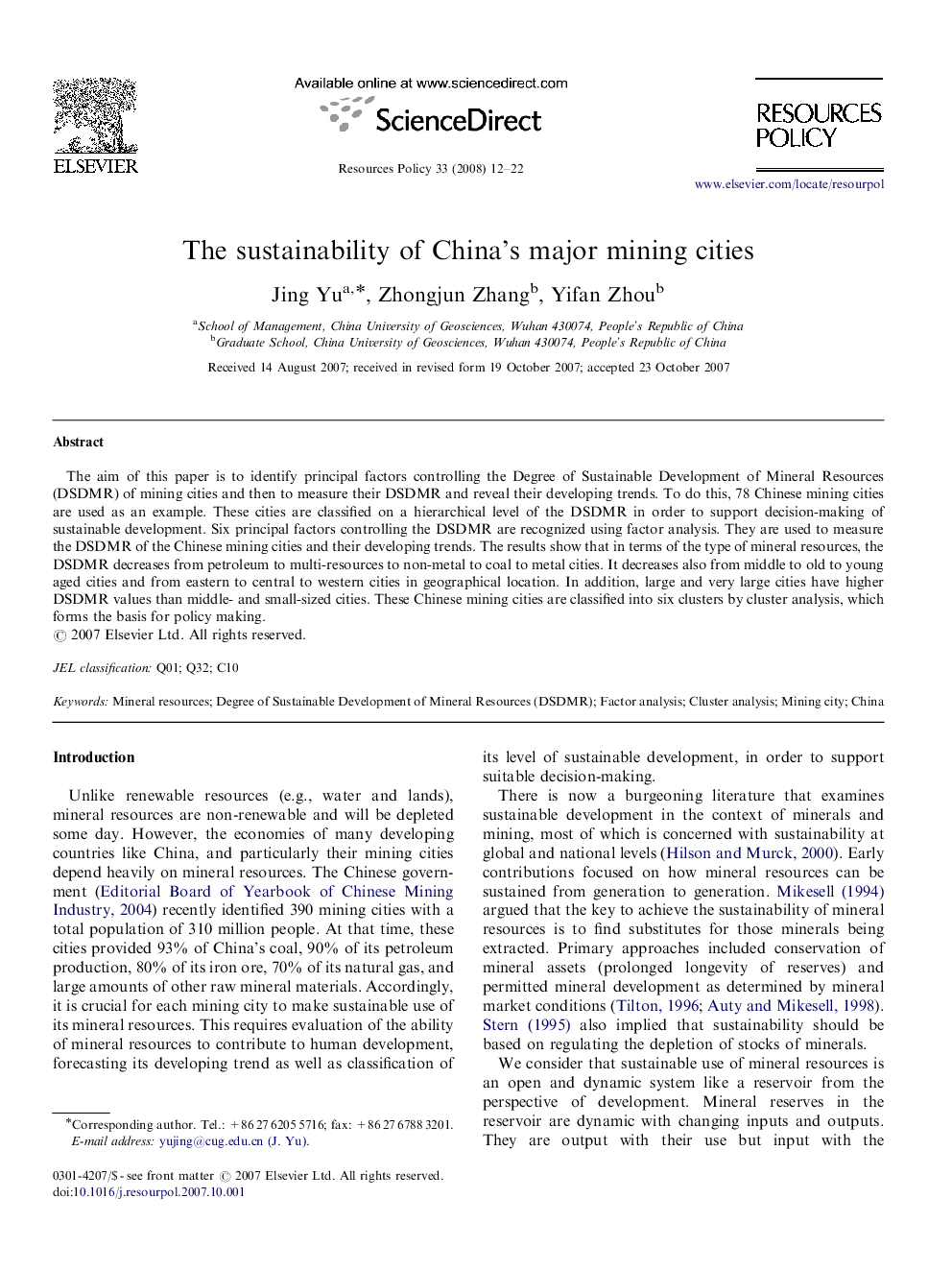| Article ID | Journal | Published Year | Pages | File Type |
|---|---|---|---|---|
| 985835 | Resources Policy | 2008 | 11 Pages |
The aim of this paper is to identify principal factors controlling the Degree of Sustainable Development of Mineral Resources (DSDMR) of mining cities and then to measure their DSDMR and reveal their developing trends. To do this, 78 Chinese mining cities are used as an example. These cities are classified on a hierarchical level of the DSDMR in order to support decision-making of sustainable development. Six principal factors controlling the DSDMR are recognized using factor analysis. They are used to measure the DSDMR of the Chinese mining cities and their developing trends. The results show that in terms of the type of mineral resources, the DSDMR decreases from petroleum to multi-resources to non-metal to coal to metal cities. It decreases also from middle to old to young aged cities and from eastern to central to western cities in geographical location. In addition, large and very large cities have higher DSDMR values than middle- and small-sized cities. These Chinese mining cities are classified into six clusters by cluster analysis, which forms the basis for policy making.
